Fabergé’s era drenched in gems and gold
Let’s be honest, unless you’re into bling-bling or over-the-top glamour kitsch, The Russian aristocrat style isn’t everyone’s cup of tea. Pre-revolutionary Russia was a playground for the elite: a tight circle of landowners, royals, and socialites dripping in diamonds. It was all about showing off wealth, and they did it with such unapologetic splendour that even Liberace might’ve blushed.
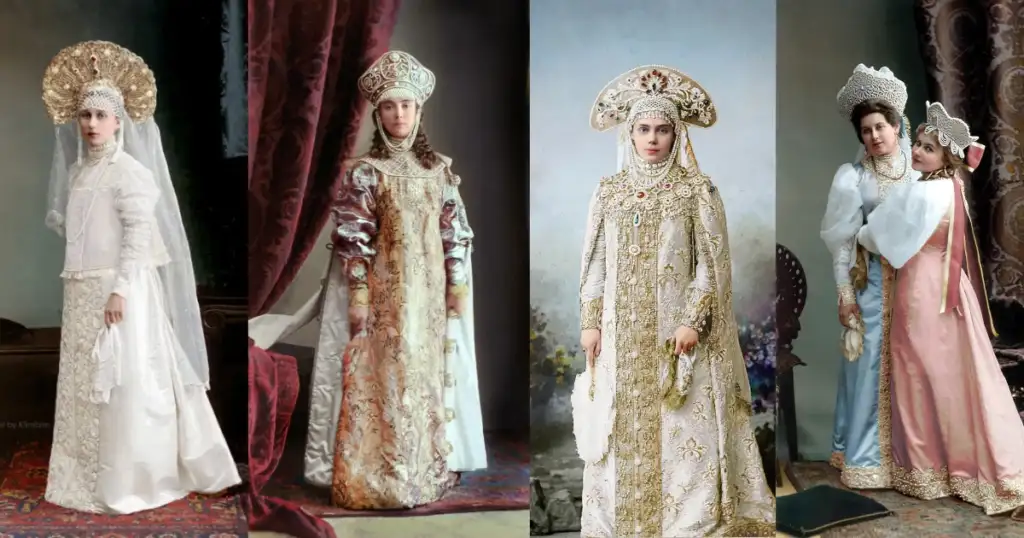
But take a moment, zoom out, and look at it through the lens of design history, and suddenly, it’s majestic. Absurd, yes. But majestic. If you can stomach the class divide (or at least set it aside for a moment), the world Fabergé was designing for makes complete sense. Extravagant jewellery wasn’t just adornment, it was identity, legacy, even politics.
Fabergé was rewriting the rules. His pieces didn’t whisper wealth; they shouted it in 24-karat gold and enamel. Personally, I find it both inspiring and heartbreaking, his work sits at the edge of two worlds: the height of imperial glory and the cliff-face of revolution.
If you haven’t watched The Last Czars on Netflix yet, it’s an absolute feast for the eyes, and a handy crash course in the cultural context that helped shape Fabergé’s rise.
Peter Carl Fabergé rise to prestige
A fusion of heritages
Peter Carl Fabergé, born in Saint Petersburg in 1846, carried a rich blend of cultural backgrounds. Though Russian by birth, his paternal roots lay in France, where his family hailed from Picardy. After the revocation of the Edict of Nantes in 1685, Fabergé’s ancestors were forced into exile, eventually settling in Germany before his grandfather, Peter, made Russia their home in 1800. On his maternal side, Carl’s heritage was Danish, adding another layer of international influence to his life.
Born into craftsmanship
Fabergé was born into a family already famed for their jeweling expertise at the Russian Court. Growing up in such a household, he received meticulous training in the family craft, ensuring that he was well-versed in the art of fine jewelry from a young age. He later apprenticed with Europe’s most prestigious jewelers, traveling through England, Germany, France, and Italy, gaining invaluable skills and experience that would shape his future work.

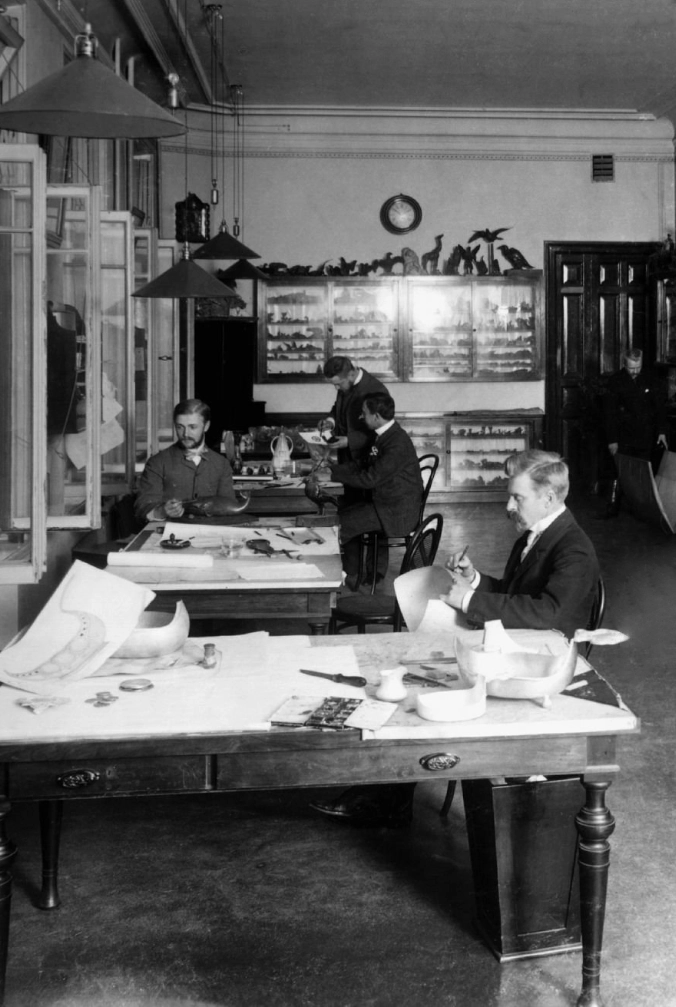
Recognition by the Imperial Court
At just 37, Fabergé’s talent was publicly acknowledged when he was awarded the gold medal at the Pan-Russian Exhibition in 1882, a prestigious honor that drew the attention of the Russian imperial court and catapulted him into the spotlight.
By 1900, at the Paris World Exhibition, Fabergé was recognised as maître by the French jewellers, and knighted into the Legion of Honour. Not bad for a guy from a small workshop in Saint Petersburg.
The artist and businessman
Under Carl’s leadership, the House of Fabergé became synonymous with artistic innovation and exceptional craftsmanship. The workshop produced a dazzling range of creations—from flowers and music boxes to intricate jewelry and clocks—all made with the finest metals and rarest stones. Fabergé transformed everyday objects into luxurious works of art, blending practicality with beauty.
And he didn’t just make beautiful things, he was smart. In 1884, Tsar Alexander III gave him the ultimate VIP pass: the official court supplier badge. It opened every door in Russia’s high society.
Fabergé’s everyday elegance and wartime adaptation
At its peak, the House of Fabergé employed around 500 craftsmen, designers, and artisans. The workshop was a hub of creativity, with a highly specialized team responsible for producing not only the famous Fabergé eggs but a wide variety of items. From exquisite clocks and charming trinkets to elegant cigarette cases, delicate snuff boxes, picture frames, luxurious watches, and even ornate lamps, each piece bore the hallmark of impeccable design.
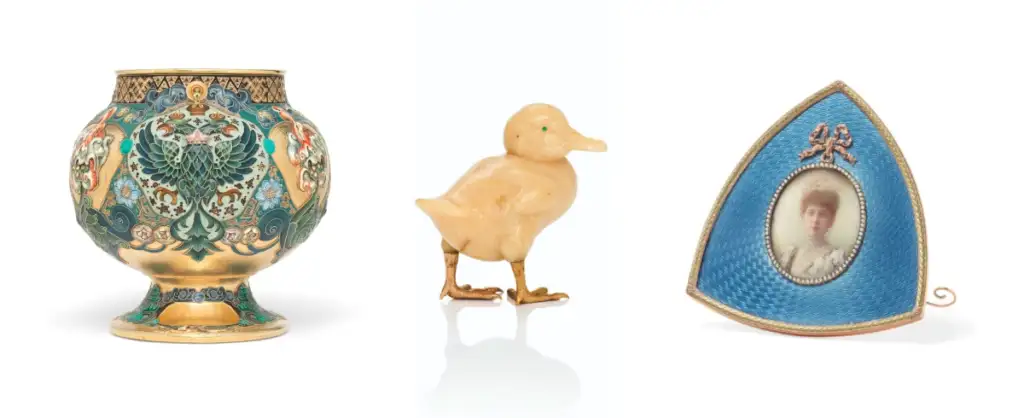
Here’s where things take a turn. When World War I hit, Fabergé could’ve gone under like so many luxury houses. But no, he adapted.
Think of how Burberry gave us trench coats, or how Hugo Boss (controversially) tailored Nazi uniforms. Fabergé pivoted too, producing syringes, lighters, grenade casings, and even patriotic ashtrays. Practical, but still designed with that same obsessive eye for detail.
And here’s something I genuinely admire: he used the war as a way to protect his artisans. By proving their work was essential to the military effort, he kept them out of combat. That’s not just business, it’s leadership.

The Fabergé Egg: part luxury object, part love letter
This bit feels almost mythical. In 1885, Tsar Alexander III wanted to gift his wife something special for Easter. He wanted to mark the significance of the holiday while offering her a heartfelt gesture of comfort during a difficult time. Not flowers. Not pearls. He wanted a surprise.
So Fabergé crafted the first Imperial Easter Egg, a white enamel shell that opened to reveal a golden yolk, which opened to a hen, which opened to a tiny diamond crown (now lost). That’s three surprises in one. It’s the world’s most extravagant precursor to today’s Kinder Surprise, except a far more luxurious, imperial version.
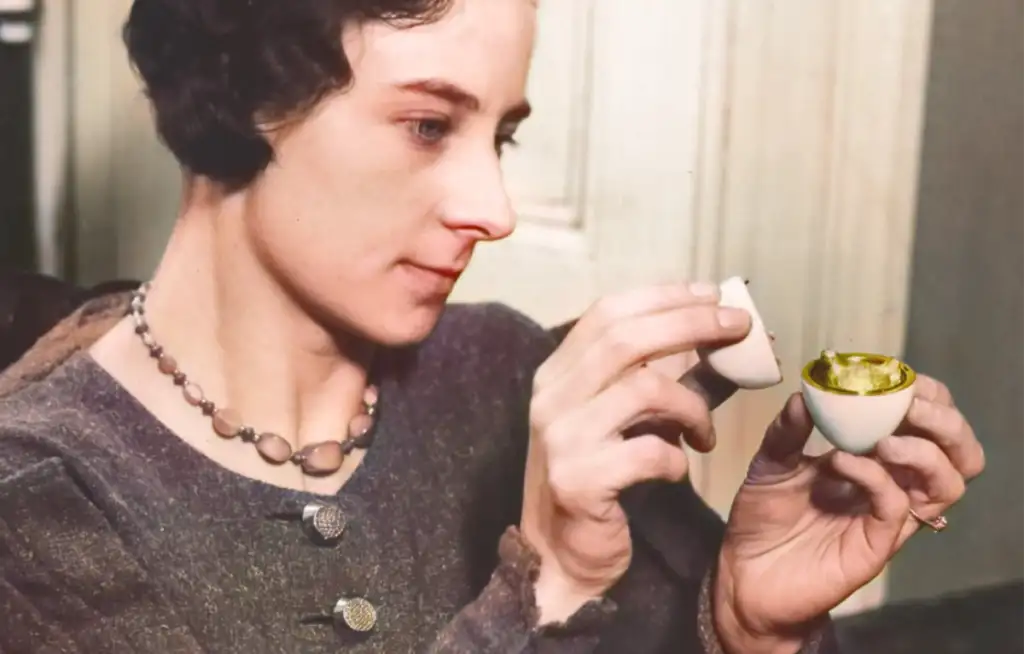
Many other intricate eggs hatched after 1885
After creating the iconic Hen Egg, Fabergé went on to craft as many as 69 eggs between 1883 and 1917, with 61 of these masterpieces surviving to this day. Fifty of them were commissioned by the Russian Imperial family, now famously known as the “Imperial Eggs.” The remaining eggs were created for the aristocracy and the elite of the industrial and financial worlds. They were, and still are, emblems of ultimate luxury.
It’s honestly impossible to describe how spectacular these things are. Some move. Some sing. One has a tiny mechanical elephant that walks. They’re interactive art. Photos alone can’t do justice to their craftsmanship, so I’ve found some videos that will show you the magic better than words ever could.
Where to find Fabergé’s legendary eggs today
If you’re curious where Fabergé’s extraordinary eggs are housed today, here’s a quick tour of their homes around the world. The largest collection is in the Kremlin Armory, Moscow, where 10 of these treasures reside. Nine more can be found at the Fabergé Museum in St. Petersburg. The Virginia Museum of Fine Arts holds five, while both the Royal Collection in London and the Metropolitan Museum of Art in New York have three each. Further afield, two eggs are showcased in Lausanne, Switzerland, with two more at Hillwood Estate in Washington, D.C., and another pair at the Walters Art Museum in Baltimore. The Cleveland Museum of Art is home to a single egg, as are the collections in Monte Carlo and the Fabergé Museum in Baden-Baden, Germany. There’s even one owned privately by Hamad bin Khalifa Al Thani, the former Emir of Qatar.
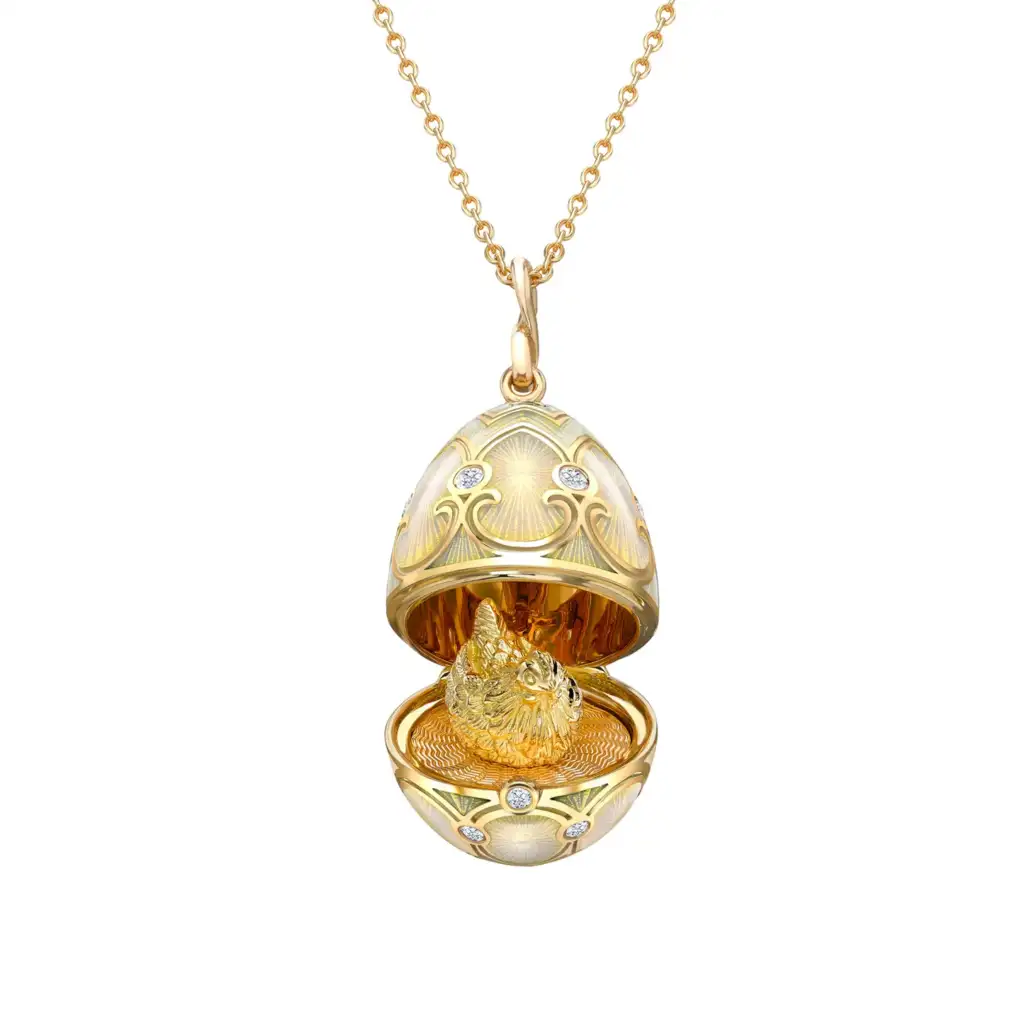
Guilloché Enamel Hen Surprise Locket
If you’re intrigued by Fabergé, you’ll find a stunning necklace in their online shop that pays homage to the iconic first egg. Yep, it’ll set you back €14,280, but shipping’s free, so there’s that.
Seven of Fabergé’s Imperial eggs have vanished without a trace, their whereabouts still unknown. These lost treasures remain one of the greatest mysteries in the world of art and luxury. Where they ended up, and whether they still exist, is a question that continues to intrigue historians, collectors, and Fabergé enthusiasts alike. So, the next time you’re rummaging through your grandma’s attic, take a second look at anything that looks as insignificant as an egg —you never know what hidden treasure might be waiting to be discovered.
Conclusion
The journey of Fabergé is a fascinating blend of art, innovation, and resilience set against a backdrop of profound change. From the breathtaking creations that enchanted the Russian elite to the practical items crafted during the hardships of World War I, Fabergé had a unique talent for turning everyday objects into extraordinary masterpieces.
Fabergé’s influence is undeniably alive and well in today’s world. You can see its mark in everything from Disney and Game of Thrones to whimsical Easter chocolate boxes, there’s no shortage of Fabergé-inspired creations out there. A quick online search will reveal an abundance of replicas, each capturing a piece of that enchanting legacy. The allure of Fabergé continues to captivate people everywhere, promising to inspire generations to come.
